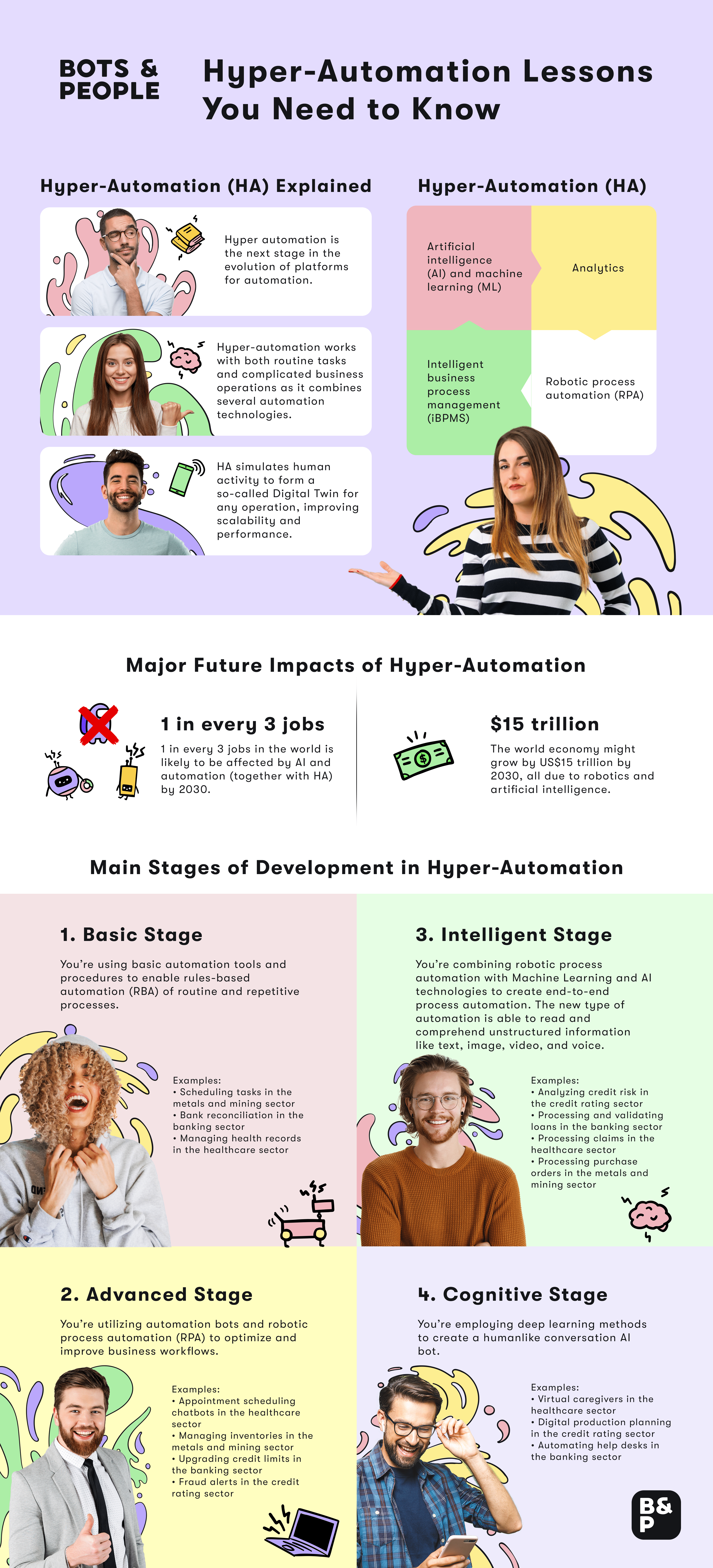Cost reduction, lower error rates and improved compliance are just a few examples of successful automation of various company processes. Such process optimizations not only make companies more effective, but also strengthen their foundations. Crises - such as the Corona pandemic - can be overcome much more successfully with forms of process automation. Find out here what is the importance of process automation in the future.
Here you will encounter automation in everyday life
Already this year, around three quarters of all companies are using software robots for process automation. These are used in a wide variety of areas: For example, for processing emails, customer experience, in sales or in the finance department.
However, the topic still remains an intangible mystery for many. Processes are already being automated, but knowledge about all-encompassing process automation is still very centered and little differentiated. For example, Robotic Process Automation (RPA) is often synonymously confused with process automation in general, when in fact it is a building block of the big picture. Other important aspects are, for example, Process Mining, API automation, cloud automation with iPaaS, AI, machine learning, etc. The joint use on the basis of an automation strategy ultimately leads to the much-vaunted Hyperautomation.

Process automation in the future creates win-win situations
More and more companies are recognizing the potential in automating business processes, but what exactly makes it so attractive for shaping the process automation in the future?
A small example:
Imagine an unmotivated employee who is obviously shaken and a little late to work. He is unmotivated because his desk is piled high with work and several hours of overtime come up every week. Even lunch and a restful break are once again cancelled in order to cope with the work. The result: stress, loss of performance and ultimately error-proneness.
This is where a software bot can come into play, supporting the struggling employee by automating repetitive tasks. This significantly relieves the employee and allows him to use the time and motivation gained for important processes and decisions. The result is not only a significantly lower error rate, but even the creation of creative development opportunities - a win-win situation for the company and the employee, so to speak. This potential already seems to have reached the management floors of German companies:
A study by FAZ in collaboration with the consulting firm Sopra Steria shows that 71% of the companies surveyed want to realign their workflows and the entirety of their processes with the help of automation. Especially financial companies, the manufacturing industry as well as public utilities and administrations see themselves more and more in a tight spot. The resulting competitive pressure is massive, because when someone starts in the industry, the race is on. The winner of this process optimization marathon will not only be rewarded with increased efficiency and sales, but also with more motivated employees and more room for innovative thought processes.
All gold what automated?
Digital transformation is fast. The pace at which technology is developing is the pace that management floors in companies have to keep up with. The pressure weighs heavily and quick decisions often lead to suboptimal implementation of automation. Many companies want to automate everything in a single process or integrate too much software from different vendors. This creates disharmony in the processes and the effectiveness that is actually intended suffers enormously as a result.
Consequently, process automation is not promising per se. A functioning infrastructure is required that has the necessary mindset to recognize, support and effectively model automation potential. Optimally, the individual sub-areas that lead to profitable automation are divided among different roles.
A full view of process automation in the future
As already mentioned, the optimal introduction of process automation in the future requires a broadly diversified infrastructure. Only the combination of the different roles results in an effective whole:
Automation Strategist
Before systems can be implemented, processes that can be automated must be identified and assessed. As an all-rounder in the field of automation, the Automation Strategist is familiar with all the necessary tools and plans their use. Furthermore, he coordinates the required team, assists and plans the individual project steps. The management of stakeholders is also part of his area of responsibility.
RPA Developer
Probably the best-known role in the field of process automation is the RPA Developer. While the Automation Strategist represents the watchful eye, he could - figuratively speaking - be described as the sword-wielding hand in the fight against repetitive processes. His area of responsibility covers low-code RPA tools, process documentation and the programming of software robots.
Cloud Automation Engineer
The Cloud Automation Engineer, deals with low-coding tools such as Zapier or Integromat and also writes custom API's when needed to improve workflows in the enterprise.
The big difference between the Cloud Automation Engineer and the RPA Developer is the choice of technology. The RPA Developer prefers to work in UI automation. This means that actual clicks are simulated. The Cloud Automation Engineer does not connect systems via the user interface (UI), but via API interfaces. Actions are usually triggered by a trigger. His focus here is on the cloud infrastructure, as legacy systems very rarely have API interfaces.
Process Mining Architect
Process mining is a technology that, like BPM, focuses on uncovering processes. The special feature: Process mining is data-driven and uncovers processes on the basis of log files. The technology is particularly suitable as a preparation for process automation. A lean process with few exceptions is ideal for automation. Process Mining is the X-ray apparatus for business processes.
The Process Mining Architect is familiar with the common software tools for Process Mining and is able to select and implement the appropriate process mining strategy according to the prevailing situation in the company. He works together with the Automation Strategist in larger projects. This is only a small insight into the different fields of activity around the automation of business processes.
The golden age of automation experts
The knowledge about process automation in the future bundled by management consultancies or IT companies is currently still sold at a high price. Often, small processes are automated in a targeted manner without determining their overall value. Likewise, active monitoring as well as continuous optimization are usually missing. Consequently - combined with the growing awareness of automation - companies are increasingly looking for experts from the automation industry whom they can use to build their infrastructure.
The race to the era of process automation in the future has already begun and more and more service providers are offering training and education in this area. Now it's up to you whether you want to be the early bird.









